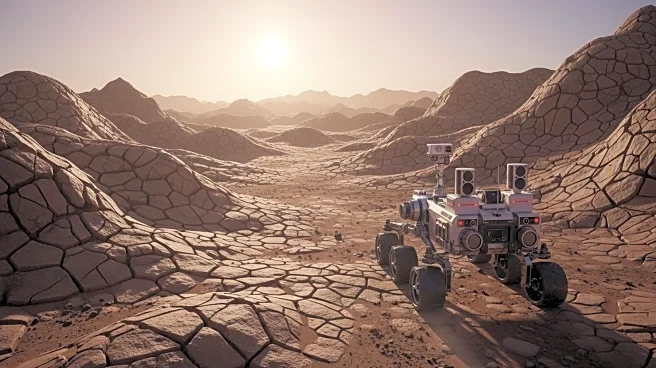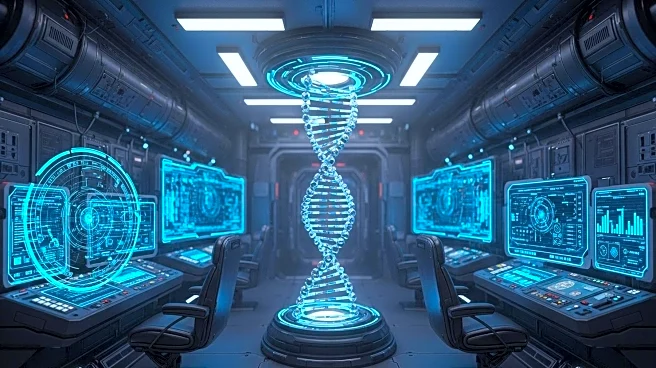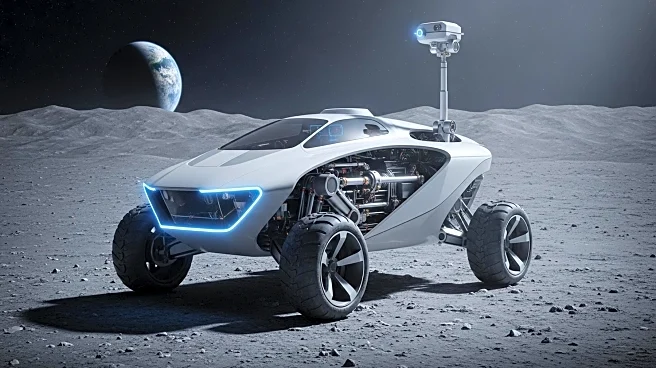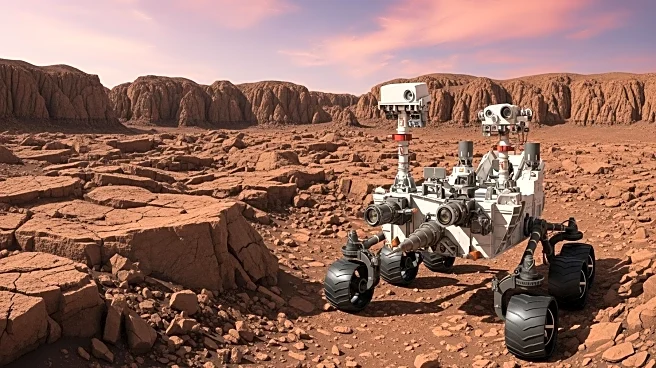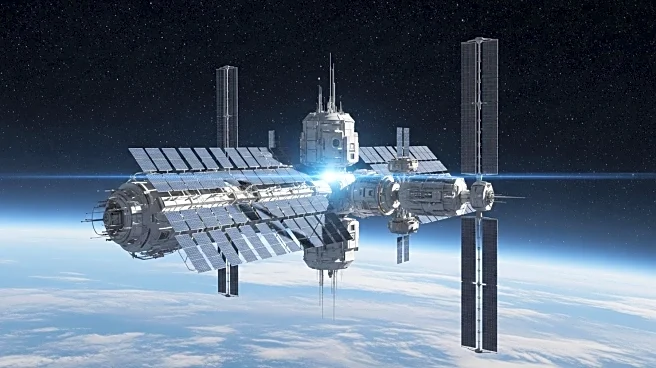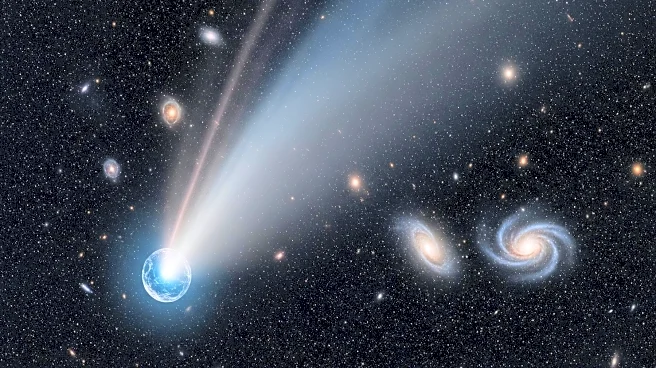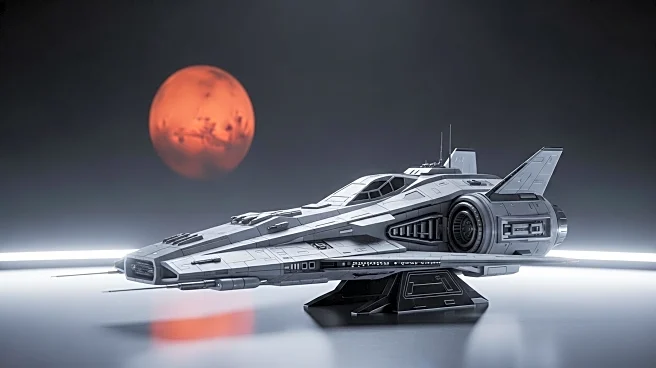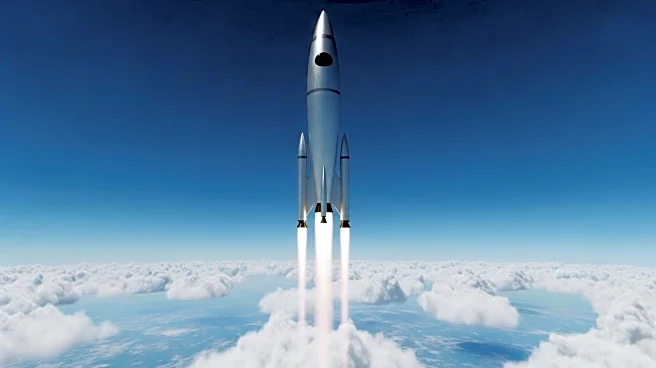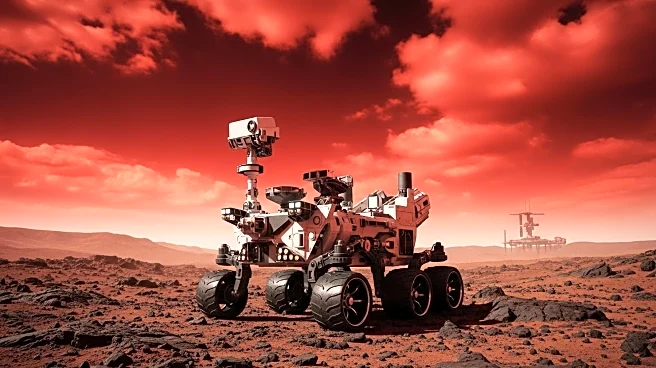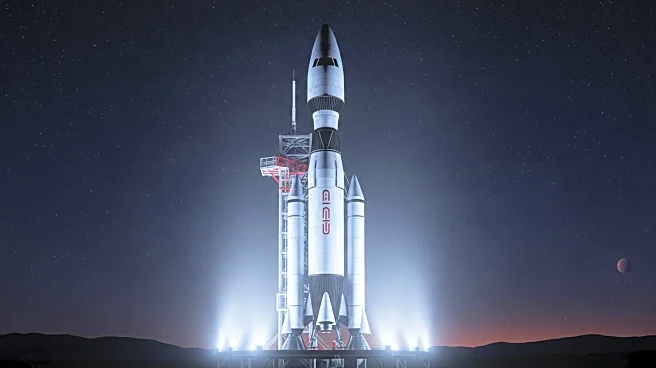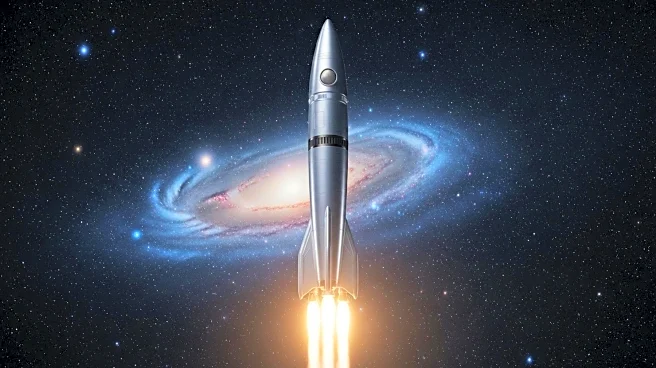What is the story about?
What's Happening?
NASA's Curiosity rover is currently navigating the boxwork region on Mars, focusing on geological exploration and potential drilling sites. The rover recently captured images of two hollows, named 'Laguna Escondida' and 'Laguna Socompa,' using its Left Navigation Camera. The mission involves detailed analysis of the ridges and hollows, with instruments like MAHLI, APXS, ChemCam, and Mastcam actively engaged in scientific observations. The rover is also conducting environmental studies, including cloud observations, as the Martian cloudy season transitions to the dusty season.
Why It's Important?
The ongoing exploration by Curiosity provides critical insights into Mars' geological history and potential for past life. Understanding the planet's surface composition and atmospheric conditions aids in planning future missions, including human exploration. The data collected helps refine models of Martian climate and surface processes, contributing to broader astrobiological research. The transition from cloudy to dusty seasons offers unique opportunities to study atmospheric dynamics, which are essential for future mission planning and technology development.
What's Next?
As the cloudy season ends, Curiosity will focus on monitoring dust activity, including dust devils, which are prevalent during the dusty season. The rover will continue its geological investigations, seeking optimal drilling sites to further analyze Martian rock samples. These efforts are part of a larger strategy to prepare for potential human missions to Mars, with ongoing data collection supporting future exploration goals.
Beyond the Headlines
The exploration of Mars by Curiosity not only advances scientific knowledge but also inspires technological innovation and international collaboration in space exploration. The mission's findings could influence future policy decisions regarding space exploration priorities and funding, as well as ethical considerations in planetary protection.
AI Generated Content
Do you find this article useful?
